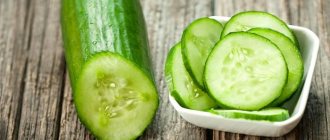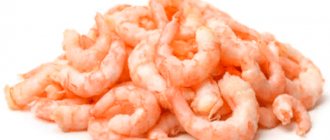Chocolate is a favorite treat for children, regardless of age. It is considered a controversial product in the nutrition of preschool children. If you give a one-year-old baby a small piece of chocolate, you can see how instantly a smile and joy appear on his face. It’s not worth experimenting at such a young age. Let's figure out when you can eat chocolate and which one is better?
Varieties of chocolate
The assortment of chocolate in stores is varied. Manufacturers distinguish 4 types. Let's look at how they differ from each other.
Dark
Contains grated cocoa and granulated sugar. It contains much less of the first ingredient than bitter. Consequently, there is more sweet component, which means the calorie content is higher.
White
This type of sweets does not contain cocoa powder, it contains:
- cacao butter;
- granulated sugar;
- powdered milk.
It does not have a tonic effect on the body, since it does not contain the substance theobromine. Instead, quality chocolate is high in potassium, which has a beneficial effect on the cardiovascular system. It cleanses blood vessels from harmful cholesterol and has antioxidant properties.
Lactic
Includes:
- grated cocoa;
- milk;
- granulated sugar.
Some manufacturers add vegetable oils (palm, coconut), which does not add any benefits to the confectionery product.
Bitter
It is considered the healthiest of all types of chocolate. The cocoa content affects the quality and its positive properties for the body. The more chocolate beans, the healthier the confectionery sweetness. What are the benefits of a high cocoa content ingredient:
- tones the body;
- normalize the emotional state;
- improves brain activity, memory;
- increases performance;
- theobromine promotes improved mucus discharge and relief during severe coughing;
- does not negatively affect tooth enamel.
Unlike other types of chocolate, it does not contain additional components (milk, fruit, flavorings, etc.). The less sugar in the product, the less sweet it will be. The optimal content of cocoa beans is from 72 to 85%.
Are there any benefits from chocolate?
Chocolate is a high-calorie and nutritious product. It also has positive properties if consumed in moderation. Chocolate contains carbohydrates, which become a source of energy. It activates the brain, improves memory and has a beneficial effect on many processes in the body.
Chocolate restores strength and is great for active children who experience serious physical, emotional and mental stress. It lifts your mood and relieves fatigue, inhibits the action of harmful microorganisms. Brings pleasure and pleasure to the child.
Chocolate provides the necessary energy, relieves fatigue, gives vigor and strength, and helps cope with depression and bad mood. Among other things, it eliminates spasms and pain, protects the liver from the negative effects of toxins.
The delicacy contains a lot of calcium and phosphorus, which has a beneficial effect on the formation and growth of the child’s skeleton and strengthens bones. Magnesium improves hematopoiesis. Chocolate will help fidgets to be more attentive and diligent, as it increases the ability to concentrate.
The treat is also beneficial for calm children. It increases mental abilities and stimulates brain function, improves memory, perception and thinking. Saturates the child’s body with vitamins B, B1 and PP, and has a beneficial effect on nerve cells.
Of course, we are talking about a high-quality real product that the child consumes in measured quantities. By the way, chocolate is healthier than chocolate candies, as it is less likely to cause caries and dental problems.
Useful characteristics of chocolate
High-quality chocolate gives children extra energy. It contains useful substances:
- B vitamins;
- provitamin A;
- substances that remove toxic compounds from the body;
- micro and macroelements – fluorine, magnesium, potassium, calcium, sodium.
The amino acid tryptophan promotes accelerated synthesis of the happiness hormone serotonin. It is what improves mood and prevents the development of stressful, depressive and apathetic states.
Important! Cocoa beans contain a substance theobromine, which affects humans like caffeine.
Why is chocolate bad for children?
- If the confectionery product contains milk, then the calorie content of the product increases significantly, which will lead to excess weight gain.
- Allergy to chocolate with milk often occurs.
- Additionally loads the pancreas and biliary system.
- Low-quality sweets contain inexpensive analogues of vegetable fats, which have an adverse effect on health.
- It excites the central nervous system, so should not be consumed in the afternoon, especially before bed.
- It is quickly addictive. Children refuse the usual sweet and healthy fruits.
- The presence of oxalates increases the risk of urolithiasis.
What kind of chocolate can children
Experts recommend giving children milk chocolate. When purchasing, it is important to pay attention to the composition, where cocoa should contain from 25 to 50%. This way the taste will be pleasant and soft. Dry cream or whole milk must be present. Undesirable additives - various nuts, caramel, alcoholic drinks, waffles, pieces of fruit. The fewer additional components a confectionery product contains, the lower the risk of an allergic reaction to the new ingredient. Lecithin is allowed as a food additive for children. The substance reduces the viscosity of chocolate. Refers to emulsifiers and is designated E322 on the packaging. Quality varieties include French, domestic brands, Belgian, Swiss.
How to make chocolate at home
Classic recipe
- Grated cocoa – 200 grams;
- Cocoa butter – 100 grams;
- Powdered sugar - 3 tables. spoons.
Homemade chocolate is the safest and most harmless product. To prepare the dessert, melt cocoa butter in a water bath, add cocoa and stir until completely dissolved. Add powdered sugar and mix, pour into molds and put in the refrigerator for half an hour.
Lactic
Powdered milk – 2 teaspoons. spoons;
Grated cocoa beans – 100 grams;
Condensed milk – 4 teaspoons. spoons;
Cocoa butter – 50 grams.
Mix the grated beans and butter in a container and melt in a water bath until smooth. Pour condensed milk into the resulting mixture, then gradually add dry milk and mix the mass thoroughly. By the way, instead of powdered milk, you can take baby formula. It will dissolve much faster, as it includes smaller grains.
Beat with a blender or mixer. The mass should become like a batter that maintains its shape. Pour the dough into molds and put it in the refrigerator for an hour. The result is a delicate and light milk chocolate.
Bitter
- Grated cocoa beans – 100 grams;
- Cocoa butter – 50 grams;
- Powdered sugar – 30 grams;
- Vanillin and a pinch of salt.
Mix the ingredients and place in a water bath. Stirring constantly, bring the mass to a homogeneous consistency and acquire a brown-black hue. If desired, you can add candied fruits, nuts, and coconut to the mixture. Pour the mixture into molds, cool and leave in the refrigerator for 30-50 minutes until hardened.
White
- Butter – 50 grams;
- Infant milk powder – 150 grams;
- Milk – 5 tables. spoon;
- Powdered sugar - 1.5 tables. spoon;
- Dried sesame seeds - 1 table. spoon;
- Vanilla sugar – 1 teaspoon.
You can also add raisins, cinnamon, chopped nuts, puffed rice or candied fruits to the recipe. Mix powdered sugar and vanilla sugar, baby formula and sesame seeds, additional ingredients, if any. Then add butter and milk, mix thoroughly, place in containers and put in the freezer for two to three hours.
We found out whether children can have chocolate. And at what age and what other sweets can be given to children, read the link.
Subscribe to our VKontakte group
At what age can a child be given chocolate?
Early introduction of sweet confectionery to a child has several negative consequences:
- manifestation of an allergic reaction;
- overweight;
- impaired metabolism.
There is no need to give sweets to babies under 1 year of age. A child over 12 months of age usually eats most of his meals with his parents. At 3 years old, he completely switches to a normal diet, which does not require special food preparation technology. Despite this, some ingredients remain completely prohibited. High in calories, significant amounts of fat and a reputation for allergenicity, it is not beneficial for children under 3 years of age. Enzymes in the baby’s body are not fully produced and are unable to constantly digest sweets. This is why chocolate should not be given to children under 3 years of age. By the age of 5, the organs of the child’s digestive system are sufficiently functioning, therefore, eating a small amount of chocolate will not cause much harm to health. It is at this age that the production of pancreatic enzymes increases, the functioning of the liver and gastrointestinal tract is normalized.
Doctors' opinion
Doctors also say that chocolate can be present in a child’s life, that this product is useful. However, they insist that a child should not be introduced to chocolate before the age of three.
“You need to extract the maximum benefit from the product,” insists Dr. Evgeniy Komarovsky.
Chocolate will be useful for children who are actively involved in sports and study at school. And for children under three years of age, this product will not be beneficial.
Academician Igor Kon, head of the children's nutrition department at RAMP, shares the same opinion. For restless children, carbohydrates will help cope with the load, and the beneficial components of chocolate will play a positive role in the development of the body. But chocolate should appear on children’s menus after three years and in small portions so as not to harm the body.
Goat's milk: benefits and harm for a child
Rules for eating chocolate
It is necessary to introduce chocolate into your baby’s diet correctly:
- give a small portion to try at the beginning of the day after eating;
- If red spots or itching appear, the product must be completely eliminated. Be sure to take an antihistamine (suprastin, zodak);
- if everything went without complications, then occasionally it is allowed to diversify the usual menu.
The confectionery product does not have a specific dosage, since it does not contain the components necessary for the child’s health. It is important to remember that this is just a sweet product, a favorite treat. From the age of 3, you are allowed to eat no more than 10 grams per day and 2 times a week. You can only offer chocolate after a meal. Otherwise, the child will refuse morning or lunch food, receiving a high-calorie piece of sweets and making up for the lack of required energy. It is recommended to treat your baby in the morning or no later than afternoon tea. For schoolchildren, milk chocolate is replaced with dark chocolate. The daily norm is up to 25 grams, the frequency of administration is 3 times a week with an active lifestyle of the child.
Possible risks and complications
Unfortunately, sweetness and pleasure often come at a price. Eating chocolate can negatively affect the condition of the skin, causing allergies, diathesis and an itchy rash throughout the body. Also, white and milk varieties have a high fat content. This in turn puts a lot of stress on the stomach and liver during the digestion process. If your baby still occasionally treats himself to the treasured tile, make sure that this happens before lunch. Otherwise, there is a risk of nervous overexcitation and sleep problems.
Contraindications
Knowing when you can eat chocolate, you need to remember in what cases a confectionery product is strictly prohibited from being included in a child’s diet:
- pancreatic dysfunction;
- excess body weight;
- cardiovascular diseases;
- metabolic disorders associated with heredity;
- neurotic disorders;
- lactose intolerance;
- chronic diseases of the excretory system, gall bladder;
- allergy;
- metabolic nephropathy.
At high temperatures and in the acute phase of viral diseases, chocolate should not be given to children, as it prevents the body temperature from decreasing and increases the time of treatment of the disease. Nowadays, the confectionery industry is developing day by day and does not ignore people for whom ordinary chocolate remains prohibited. For this purpose, special types are being developed:
- diabetic, for people with high blood glucose levels. The calorie content of the products is low, since simple granulated sugar is replaced with sorbitol or fructose;
- dietary – no fats or sugar. The last ingredient can be in small quantities.
Possible harm
When eating chocolate with nuts, the risk of developing an allergy increases significantly.
It is important to understand that if chocolate is introduced into the baby’s diet too early or if the rules for its use are violated, negative consequences may occur.
- Excessive consumption of chocolate containing sugar increases the risk of developing diabetes.
- Since the product is an easily digestible carbohydrate, the development of obesity is possible (with frequent consumption of the treat).
- There is a risk of tooth decay, as sweets thin out tooth enamel.
- Eating chocolate in the afternoon can disrupt sleep (due to the theobromine and caffeine contained in the product).
- The oxalates included in the composition increase the likelihood of kidney stones (if the child is predisposed).
- It is possible to develop an allergy to chocolate, since it contains potential allergens, namely: caffeine, flavonol, theobromine, phenylethylamine. The situation can also be complicated if parents give the child a nut option. In such cases, both chocolate and additives can cause an allergic reaction. An allergy to chocolate may result in the following symptoms:
- rashes appear on the skin that are bright red in color;
- on the stomach, under the knees, in the bends of the elbows, on the back, flaky or weeping lesions may appear;
- the baby may experience excessive lacrimation and rhinitis of an allergic nature;
- possible manifestation of negative manifestations from the digestive system, in particular nausea, diarrhea, abdominal pain, vomiting;
- in case of a severe allergic reaction, Quincke's edema cannot be excluded.
It is important to know that there are contraindications to eating chocolate; if you have certain diagnoses, this delicacy is not recommended at any age:
- pancreatic diseases;
- obesity;
- heart pathologies;
- neuro-arthritic diathesis;
- neuroses;
- diabetes;
- dismetabolic nephropathy;
- pathology of the gallbladder and liver;
- if the child is persistently allergic;
- The consumption of milk chocolate is contraindicated in the presence of lactase deficiency.
It is important to know that during the acute phase of a viral infection and at a high temperature, the child is prohibited from giving chocolate, since this delicacy prolongs the recovery period and prevents the body temperature from lowering.











